An artful salute to veterans
December 12, 2013
As the county’s Bob Hope Patriotic Hall is formally rededicated this week after an extensive renovation, a trio of murals brought to life over the past 3½ years by acclaimed L.A. artist Kent Twitchell will share the spotlight with the array of dignitaries, veterans and military bands on hand to mark the building’s transformation.
Twitchell’s murals, which reimagine the original artworks by Helen Lundeberg that mysteriously vanished from the building’s lobby sometime in the 1970s, depict veterans of many generations in patriotic scenes. This video captures Twitchell’s work in progress last year.
Twitchell’s work, called “We the People, Out of Many, One,” consists of three large tableaux, each measuring 20 feet by 12 feet. It was commissioned by the Los Angeles County Arts Commission as part of the county’s Civic Art Program.
The Patriotic Hall setting represents an unusual venue for Twitchell: the great indoors. He is best known for his massive and much-celebrated outdoor works, including “Harbor Freeway Overture,” that have helped define the L.A. cityscape for decades. But some of his greatest exterior works have been lost over the years, including the six-story high “Ed Ruscha Monument,” which was painted over by work crews in 2006. As he started work on the Patriotic Hall project, Twitchell said that he welcomed the opportunity to create art inside, since the outdoors increasingly seemed like “enemy territory.”
Although the rededication event on Friday, November 8, is not open to the public, the building is already up and running as the new home of the county’s Department of Military and Veterans Affairs. The county’s Department of Mental Health also offers services to veterans in the building, which was originally dedicated in 1926. Other veterans service organizations are also expected to move in by the end of the year. Bob Hope Patriotic Hall, located at 1816 South Figueroa Street in downtown Los Angeles, has long been a familiar landmark to motorists traveling through the intersection of the 110 and 10 freeways.
Among those expected to take part Friday in the rededication is 103-year-old veteran Bea Cohen, believed to be the oldest living female veteran in California. Cohen, who served in the U.S. Army during World War II, remains an active volunteer for veterans’ causes.
The celebration of the building’s reopening after its $46 million renovation will be emceed by NBC4 weatherman Fritz Coleman. Also participating will be representatives of StoryCorps’ Military Voices Initiative, who will record the stories of veterans and their families at the site. Among those slated to record their stories: Kent Twitchell himself, who in addition to being a renowned muralist also is a Vietnam veteran.
Posted 11/6/13
Ringing in a Grand new tradition
December 12, 2013
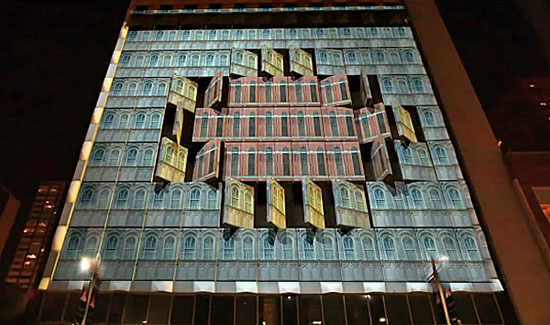
Like the tranformation of this Dallas building, a spectular "3D digital mapping" show is planned for City Hall.
From the first, it was part of the civic vision—a big, free, central place where Los Angeles would, for once, come together in public on New Year’s Eve.
Even while it was on the drawing boards, Grand Park was being touted as a rival to the big, cold-city countdowns that have always seemed to have the market cornered on December 31st at midnight. At meetings, civic leader Eli Broad talked excitedly about the notion, envisioning televised images of a 12-acre party between The Music Center Plaza and L.A. City Hall.
Now, at last, Grand Park will step up with its first New Year’s Eve celebration, an event that, at least for now, may not draw the hundreds of thousands annually estimated at Times Square, but that is expected to set its own kinds of records with a dazzling technological display that will be the largest of its kind ever attempted on the West Coast.
Of course, there’ll be live music, dancing, food trucks and a cash bar. But the highlight is expected to be a colossal presentation of so-called “3D digital mapping”—a high-tech urban art form that will make L.A.’s iconic City Hall do some things that it may have to blame on the champagne in the morning.
“I don’t think anyone in L.A. has done anything on this scale,” says Jonathan Keith, creative director at Idea Giants, the local consortium of 3D special effects artists who created the extravaganza.
The technology, which employs projectors and sophisticated 3D models to make art out of ordinary landscapes, has been used to turn skyscrapers into everything from ancient ruins to giant dancing monkeys. Windows can seem to extrude, walls can seem to fall away, and—in one stunt hinted at by the creators of the New Year’s Eve show—whole landmarks can seem to disappear and be replaced by Grand Park’s renovated jewel, the Arthur J. Will Memorial Fountain. (Click here for a sample of what digital mappers can do to an unsuspecting building.)
Keith says his team will use a 20-foot stack of five 40,000-lumen projectors weighing about 500 pounds each—state-of-the art equipment. “I believe we have every 40K projector in California for this event,” Keith says. “We needed some major fire power with a structure the size of City Hall.”
The party is the most ambitious undertaking yet for park programmers, who have built audiences for the new downtown destination through a number of high profile events. The biggest was on the Fourth of July, when some 10,000 revelers flocked to Grand Park’s lawns to watch fireworks, but thousands also have gathered for events ranging from a live screening of the 2012 Presidential Elections, Mayor Eric Garcetti’s swearing-in celebration, an assortment of outdoor concerts and CicLAvia.
To that end, Julia Diamond, the park’s director of programming, says organizers have tried to err on the side of caution in planning the New Year’s Eve celebration. Although they’re planning for a repeat of the Independence Day attendance, they also avoided bringing too much celebrity wattage to the entertainment lineup, lest a too-massive turnout spoil the park’s vibe.
“I think especially in this early period, the event isn’t about a person or a band, especially on New Year’s Eve,” says Diamond. “Maybe down the road we’ll go with a big national name, but right now, this space isn’t a 100,000-person venue or even a 30,000-person venue.
“We don’t want to re-create the kind of experience you have at Times Square, where you’re smashed into a packed concrete space where you can’t sit down and can’t move and can’t eat. And the bigger names you have, the more you get of those logistical issues. We want people to come in, find a bench, spread out and enjoy themselves with their families.”
A key question, of course, is: What will the countdown look like? Organizers have been close-lipped about the details, but they will confirm that they don’t want their clock to strike midnight the way Times Square’s does either, although there will be a live feed of the ball dropping for early birds at 9 p.m.
“We can represent the passing of time in ways that are much more creative and dynamic and sleek now,” Diamond says. “The ball dropping is great and iconic, but it’s really analog.”
Beyond that, Diamond says, there will mostly be brightness and action. Images of revelers and their hopes for the New Year will be projected on the Hall of Records, as will names of the various communities of Los Angeles County.
“The first thing people will notice is a sort of neon takeover of the park,” she says. “You’ll be surrounded by lights and color and New Year’s Eve.”
The party will also showcase art installations symbolic of the city by Michael Murphy, Geoff McFetridge and Charles Baker, and dancing by the hip-hop Versa-Style Dance Company.
Dublab, an L.A. nonprofit web radio collective, will provide music, and Fool’s Gold, a Los Angeles Afropop collective, will headline and ring in 2014 with their rendition of “Auld Lang Syne.”
In short, she says, midnight on December 31 promises to be a lot like L.A.—light-hearted, cutting-edge, and—at least lately—a little more interested in community.
“This hasn’t been a place where New Year’s Eve is celebrated collectively, but I think people are more interested in coming together,” says Diamond. “What we’re building is a new tradition for L.A.”
Posted 12/12/13
The day I met Mandela
December 10, 2013
Los Angeles City Hall has played host over the years to heads of state, visiting dignitaries and many of the world’s great and near-great.
But one visit on June, 29, 1990 by a smiling septuagenarian fresh out of a South African prison stands in a class of its own.
Crowds waited hours in the sun to see Nelson Mandela, the living embodiment of the struggle against apartheid, as he came through our city on what all of us sensed was a march of destiny for his country and the world.
Mandela was introduced by Gregory Peck, embraced by Sidney Poitier and lauded as a hero by Mayor Tom Bradley. Harry Belafonte was there that day with his video camera. I’d brought mine from home, too, and we ended up videotaping each other.
The atmosphere was electric as thousands waited for a glimpse of Mandela. Some climbed trees, craning to get a better look.
Just five years earlier, while Mandela was still imprisoned on Robben Island, I had as a Los Angeles city councilman helped lead divestiture efforts that prompted withdrawal of city deposits from banks doing business in South Africa and halted some pension fund investments in companies with connections there.
Now, here was Mandela himself, paying tribute to those actions and many others that were bringing inexorable pressure to the fight to end the inhumanity of apartheid.
“Thank you for supporting us when we needed you most,” Mandela told us that day. “Thank you for remembering us even though we were incarcerated in prison dungeons thousands of miles away from here. Thank you for caring. We are on freedom road, and nothing is going to stop us from reaching our destination.”
After the speeches, at a reception hosted by the mayor, I had a chance to shake Mandela’s hand and exchange a few words with him. There was so much I wanted to say about my admiration for him, but with the crush of people all around us, there was only time to exchange a few casual pleasantries. Still, it was an opportunity I treasure to this day.
Not just because it was a chance to meet a personal hero, someone I’d admired from afar since my own early days as a human rights activist. But also because of what he showed the world following his release after 27 long years in prison. It was inspiring and remarkable to me that when he came out, retribution was not on his agenda—reconciliation was. When he went on to lead South Africa as its president, he was inclusive. Healing his beloved country would take working together, and no one showed the power of a collaborative spirit more than Mandela.
He set an enduring example of cooperation and selflessness that’s not often seen in public life these days.
As Mandela was memorialized after his death last week at the age of 95 by leaders including President Barack Obama in Johannesburg, I found myself thinking about the power of individuals to change the world—the importance of taking a public stand against injustice, and of lending our vocal and moral support to those, like Mandela, who put their necks on the line for a cause greater than themselves.
Every generation has its heroes—those all-too-rare individuals who stand up and make a difference. In our times, they’ve included the late Andrei Sakharov, the “voice of conscience” against human rights abuses in the Soviet Union and the inspiring Aung San Suu Kyi in Burma. But no one, I would argue, had the impact and experience of Mandela, who paid such a profound price in terms of the years of solitary confinement, yet emerged from behind bars to see the comparatively swift demise of the apartheid system he fought so effectively against.
He stands alone. And those of us fortunate enough to have even once crossed his path will always stand in awe.
Posted 12/10/13
This parking lot’s no paradise
December 6, 2013
On a chilly weekday morning, after squeezing his truck into the last available spot in the main lot at the Universal City/Studio City subway station, Mario Beltran summed up the parking situation in two words: “It’s terrible.”
“If you’re not here by 8 o’clock, you’re out of luck,” said Beltran, 36, as he hurried to catch a train to downtown L.A.
Beltran was lucky that day. According to some of his fellow commuters, lots are often filled up by 7:30 a.m. or even earlier at both of the Valley’s Red Line stations, in Universal City and in North Hollywood.
Some, like 25-year-old Joanna Sintek, who commutes from Burbank to the Natural History Museum in Exposition Park, have had to learn that the hard way.
“I would show up and get grumpy and have nowhere to park,” Sintek said. “I’d just drive instead.”
Since then, Sintek has discovered an L.A. County-owned overflow lot on Ventura Boulevard, but she said it’s a long haul from that lot to the station entrance, and it comes with an uncomfortable passage through a poorly-lit pedestrian tunnel beneath the 101 Freeway.
Parking can be tough in many parts of the city, but the two San Fernando Valley subway stations get extra pressure because they serve as the main transit gateways to Hollywood and downtown L.A.
Help may be on the way. On December 5, Metro’s Board of Directors unanimously passed a motion by L.A. City Councilman Paul Krekorian, County Supervisor Zev Yaroslavsky and Mayor Eric Garcetti, instructing the agency to investigate possible fixes, such as additional lots, parking garages or a joint development project to increase parking. The motion also directs staff to report back on bicycle and pedestrian improvements that could be made to the stations and surrounding areas.
There are currently 951 spaces at North Hollywood—300 of which are reserved at a cost of $39 per month. At Universal, there are 661 spaces, 140 of which are reserved. The County-owned satellite lot has 160 more spaces.
Robin Blair, Metro’s director of planning, said the agency already is in the process of installing a lot in North Hollywood that will accommodate 187 more vehicles, but he admitted the effort wouldn’t satisfy the rapidly-growing demand.
“There isn’t enough parking, that’s the bottom line,” Blair said.
Metro owns several parcels adjacent to the stations, but Blair is skeptical about building parking-only structures because of the high value of the land, which is located in popular areas like the NoHo Arts District and Universal City. “The sites are valuable as destinations and you are going to have pressure to do some sort of joint development,” he said. “Once you get in the discussion of parking garages, that’s not an option.”
The North Hollywood station is the northern terminus of the Red Line, and Blair said the “transit-shed” of the station—the geographical area from which it draws passengers—is enormous. It is used by about 33,500 people on an average weekday, bringing in people from North Hollywood, Burbank and much of the west San Fernando Valley via the Orange Line. Commuters from as far north as Palmdale drive to the station.
Because of that ridership and the potential for further growth, Blair hopes the station areas themselves can become destinations where people can eat, shop and hang out. That’s in sync with the motion’s intention to create “transit/mobility hubs” that would bring more riders into Metro’s system—and not necessarily just those who get there by car.
For bike advocates, new infrastructure is crucial because the stations border the Orange Line Bike Path, the Chandler Bikeway and a future section of the L.A. River Bike Path that’s in the pipeline. Those paths approach the stations but the parking lots were not designed for bicycle access, said Eric Bruins, director of policy and planning for the L.A. County Bicycle Coalition. He added that the stations bookend a stretch of Lankershim Boulevard where the group is pushing for bike lanes. “If you connect these two hubs with lanes, that neighborhood will really take off,” he said.
The move to create better access to the subway stations is one of three recent proposals that aim to improve the San Fernando Valley’s public transportation experience.
After residents around Pierce College complained that Orange Line patrons were urinating on their walkways and alleys because of a lack of bathrooms, Yaroslavsky, Krekorian and Supervisor Michael D. Antonovich moved to have the agency install bathrooms or come up with another solution. Their motion, adopted by Metro’s Board of Directors last week, also calls for the agency to look into adding bathrooms throughout its rail and bus rapid transit system. Blair said that could be a tall order, however; because of security and maintenance needs, having bathrooms at all stations could cost an estimated $70 million or more a year.
Finally, a motion by Yaroslavsky and Krekorian, adopted by the full board, seeks to curb freeloaders on the Orange Line, where fare evasion enforcement is falling short of the agency’s goal, with officers conducting checks only one-third as often as they should. Potential solutions could include increased enforcement, adding gates to stations, installing additional TAP card readers or improving signage.
For Carlos Mora, a commuter who has lived in transit-friendly cities like London and New York, such fixes are overdue steps toward improving what he calls “the crappiest infrastructure for public transportation ever.”
“It’s getting better,” Mora added, as he headed towards the parking space that he’d waited two months to reserve. “But if it was more these hubs where people could work and live and shop and entertain? That would be awesome.”
Posted 12/6/13
Making spirits bright
December 6, 2013
The holiday season demands a soundtrack, and for many musicians, this is one of the busiest times of the year.
Just ask Jane Sarture what her ensemble is up to these days.
“We played this morning in a real estate office,” Sarture said. “We’re going to go out to hospitals, senior centers, the Ronald McDonald House charity Christmas party. We’ll be playing at Olive View hospital. We’re going to be at the Kaiser farmer’s market… I don’t think I ever stopped to count yet but I think we have 25 performances across 24 days.”
Sarture is a music director, but she’s not leading a local orchestra, singing group or jazz combo. Her musicians are developmentally disabled adults who play in the ARC Handbell Choir.
Their rendition of “Jingle Bells” may not be the slickest version you’ll hear this season, but it’s undoubtedly the most heartwarming.
“It is inspiring,” said Sarture, 52, a former associate producer of television game shows who switched careers to work at ARC 22 years ago and now accompanies the group on keyboard during their performances.
“The first day I walked in, I was like, “This is so cool.’ It’s like that old cliché: it’s not a job, it’s a calling,” she said of her work at the non-profit ARC (Activities Recreation and Care). The North Hollywood organization offers adults with cognitive disabilities a chance to take part in a wide range of life-enriching activities, from camping and field trips to volunteering at senior centers and even running marathons. The handbell choir is one of the most visible manifestations of the organization’s mission; they’ve performed 11 times since 1999 in the county’s Holiday Celebration, which is broadcast live on KCET. (This video captures one of their previous performances.)
This year, they’re returning to the stage of the Dorothy Chandler Pavilion for the 12th time to perform in the annual Christmas Eve extravaganza, produced by the county Arts Commission and featuring an array of performers in many genres. If past experience is any indication, look for the audience to respond to the handbell choir with a rousing ovation—and perhaps a discreet tear or two.
“People are amazed,” said Jennifer Davis, an ARC employee who conducts the ensemble’s performances and also serves as the organization’s volunteer marathon coach. She ran the New York Marathon this year with ARC client Jimmy Jenson, who has Down syndrome and received national acclaim on the “Today” show for his accomplishment.
“A lot of times people see the young, cute babies and they don’t know what happens [to the developmental disabled] when they grow up,” Davis said. “You’ll see people with tears streaming down their faces and they’ll say ‘I have a six-year-old and to think that my child can grow up and live such a phenomenal life.’ ”
Davis said an overarching message behind the group’s success is a determination to look past what people can’t do and focus instead on what each individual is capable of.
“When we look at what we can do, and what we can contribute, that’s when community and the real music in life happens,” she said.
ARC’s handbell choir has been jingling all the way since 1985 and now performs year-round.
They don’t charge for their performances, but happily accept donations, which Sarture said can range from “a great lunch and a couple of candy canes” to a check for $50 or even $2,000.
It all comes in handy when you’re trying run a handbell choir.
“It’s an expensive operation,” Sarture said. “If you drop a bell, it’s $200.”
There’s plenty of music in the air, but one thing you won’t hear from this group is any complaining about how busy things get when the holidays roll around.
“It’s amazing,” said one performer, 34-year-old Hillary Shaw, after an evening performance at a holiday open house in Supervisor Zev Yaroslavsky’s Van Nuys district office this week.
And as for Sarture? “It’s a blast,” she said. “It’s my favorite time of the year.”
Posted 12/6/13
Some major night closures on tap
December 2, 2013
The entire southbound 405 Freeway will be closing from Sunset Boulevard to Santa Monica Boulevard for overnight work on Monday and Tuesday, Dec. 2 and 3. That work will be followed on Wednesday, Dec. 4, with the overnight closure of all lanes of the northbound 405 from Santa Monica Boulevard to Moraga Drive.
Metro is providing detour details and other information about the closures in separate construction notices, one for each night of work. Click here for Monday, here for Tuesday and here for Wednesday. Travelers, take note: ramp closures will start as early as 7 p.m., with freeway lanes closing starting at 10 p.m. and reopening by 5 a.m. the following morning.
Construction workers will be restriping lanes each night as part of the effort to widen the freeway.
Work on the long-running project, to construct a 10-mile northbound carpool lane along with other improvements, is 85% complete, but some construction is expected to continue into next year.
Posted 12/2/13




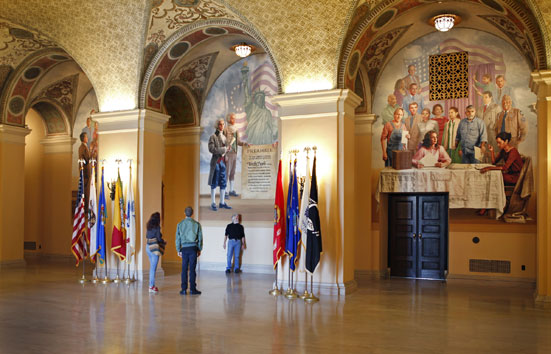
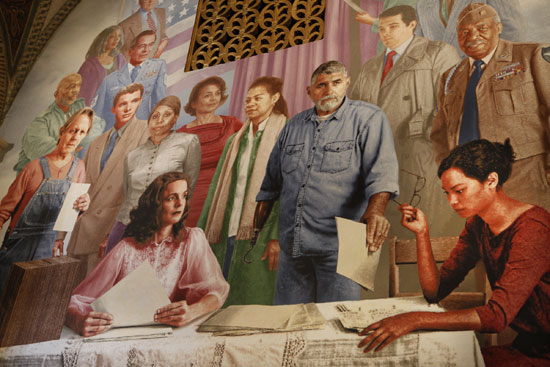
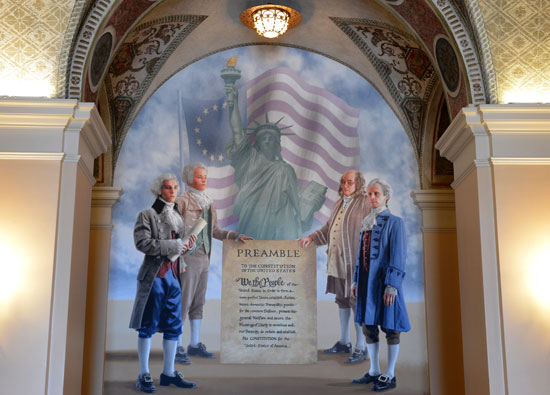
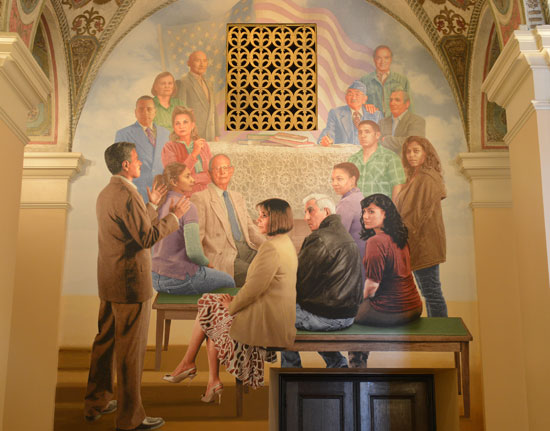
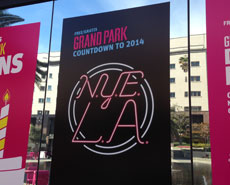
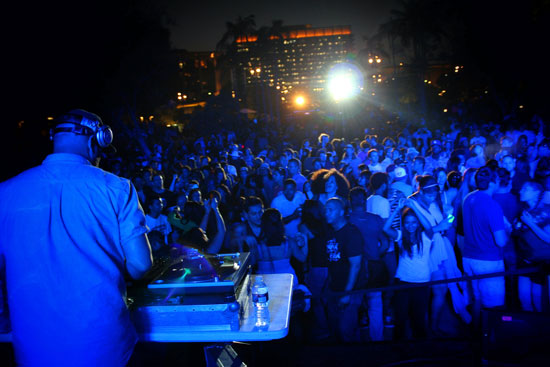
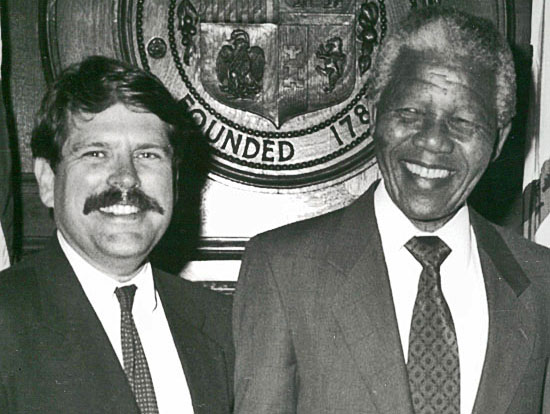
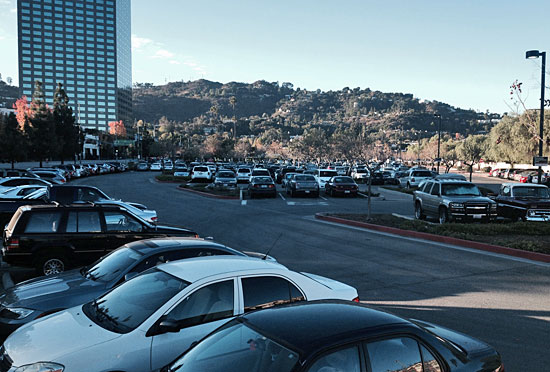
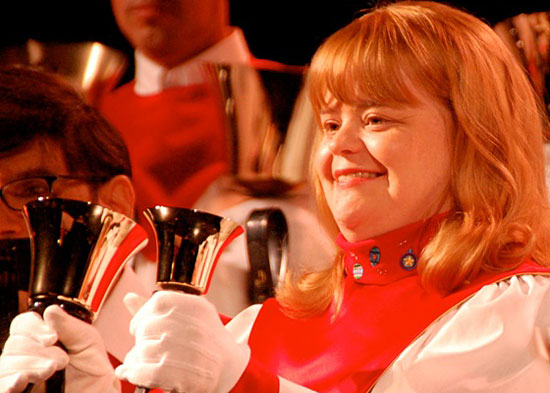

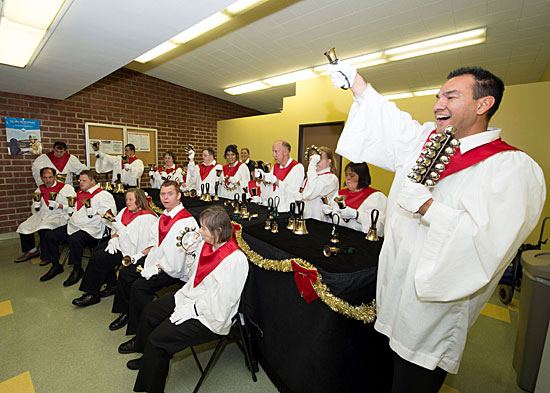
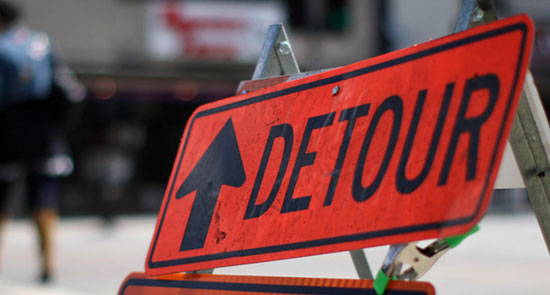





 Check for the latest closure information
Check for the latest closure information








